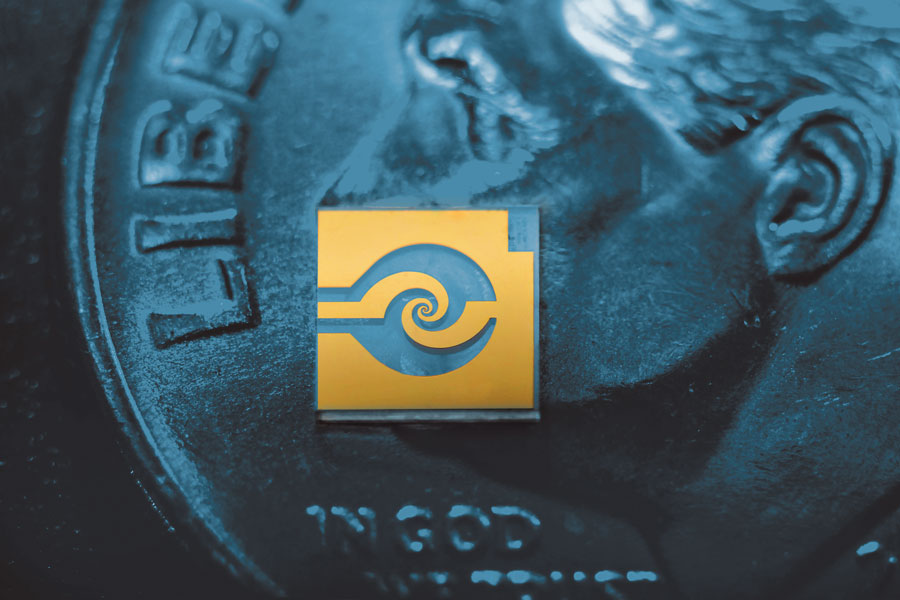Above:
JPL developed a new generation of hot-electron bolometric chips based on MgB2. This chip is fabricated with a spiral antenna, placed on top of a U.S. dime shown for size.
Detectors
Very Cool Detectors
Boris Karasik - Daniel Cunnane
Extremely high sensitivity detectors are required for investigating the star-forming regions of the universe and making quantitative measurements on abundances of various molecular species in areas of active star formation. A novel terahertz (THz) radiation mixer made from the high-critical-temperature superconducting material MgB2 has recently been demonstrated. Even though superconductivity in MgB2 with critical temperature ~ 40 K was discovered in 2001, only now have ultrathin high-quality films become available. Such films are the key in achievement of the high thermal relaxation speed (wide mixer bandwidth).
JPL has developed quasi-optical MgB2 HEB mixers for the 0.6–2.5 THz range and performed a series of proof-of-concept tests demonstrating the large mixer bandwidth (up to 8.7 GHz) and low noise temperature (~ 1,000 K, double-sideband). Another important benefit of the new technology is the possibility of operating the mixer at 20–25 K. This will allow for a much simpler and less expensive cryo-cooling approach, especially on space-borne platforms. For comparison, the Herschel HIFI instrument required liquid helium for cooling, which eventually limited the mission lifetime to ~ 3 years.


